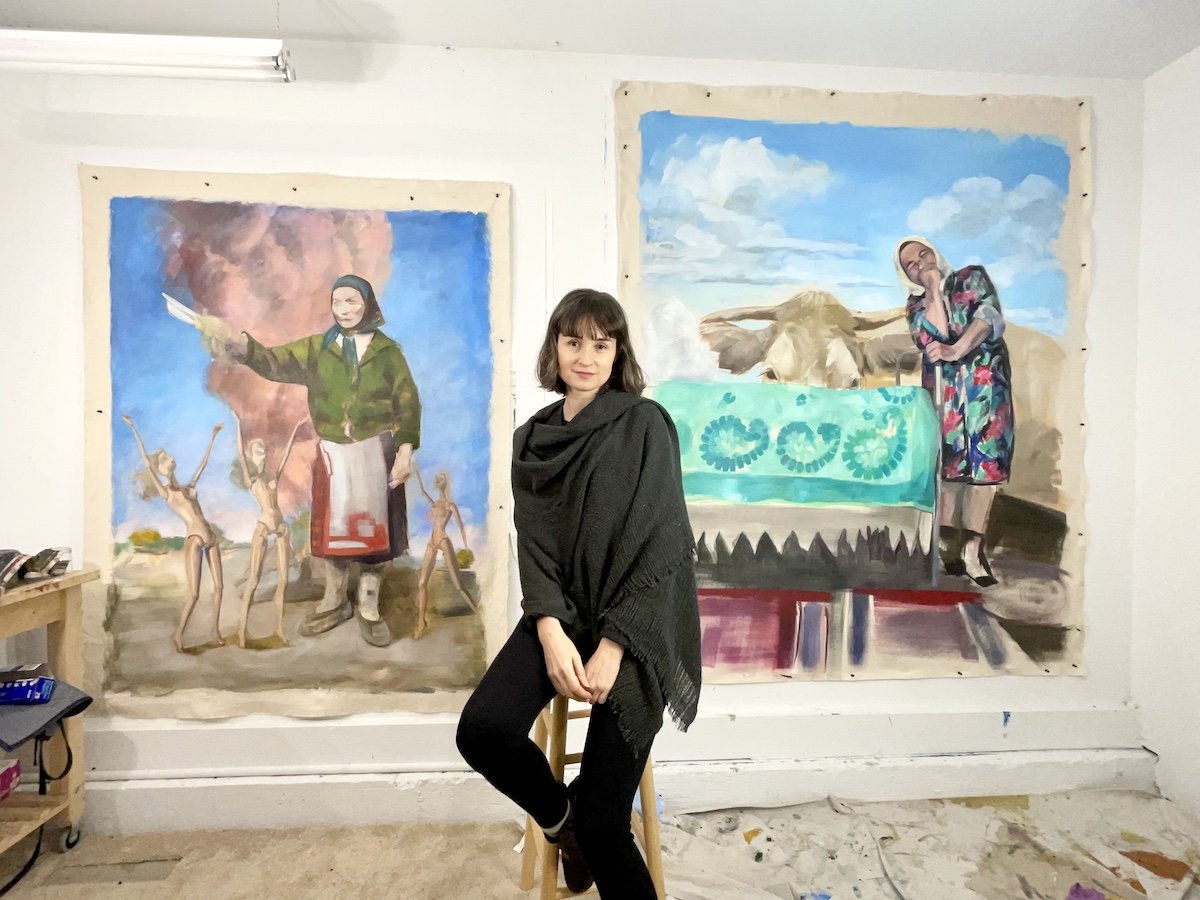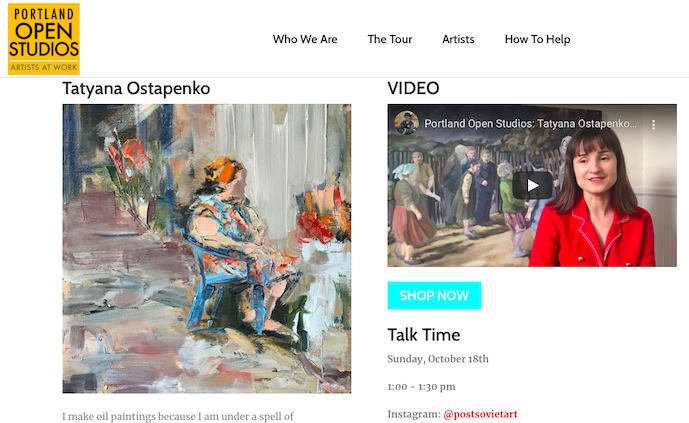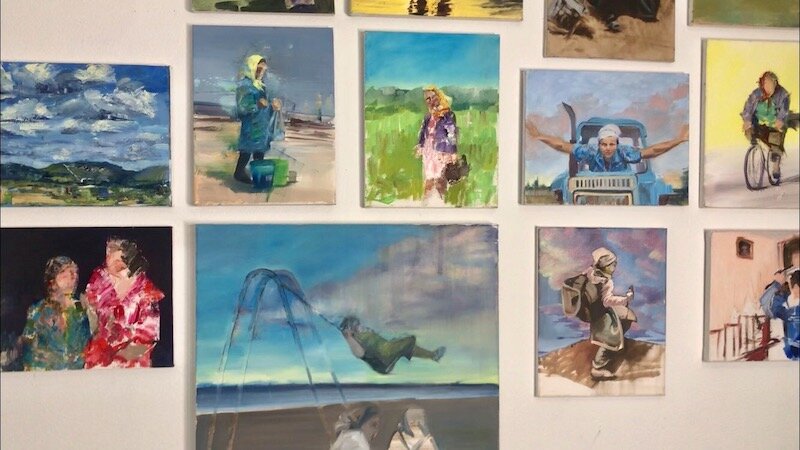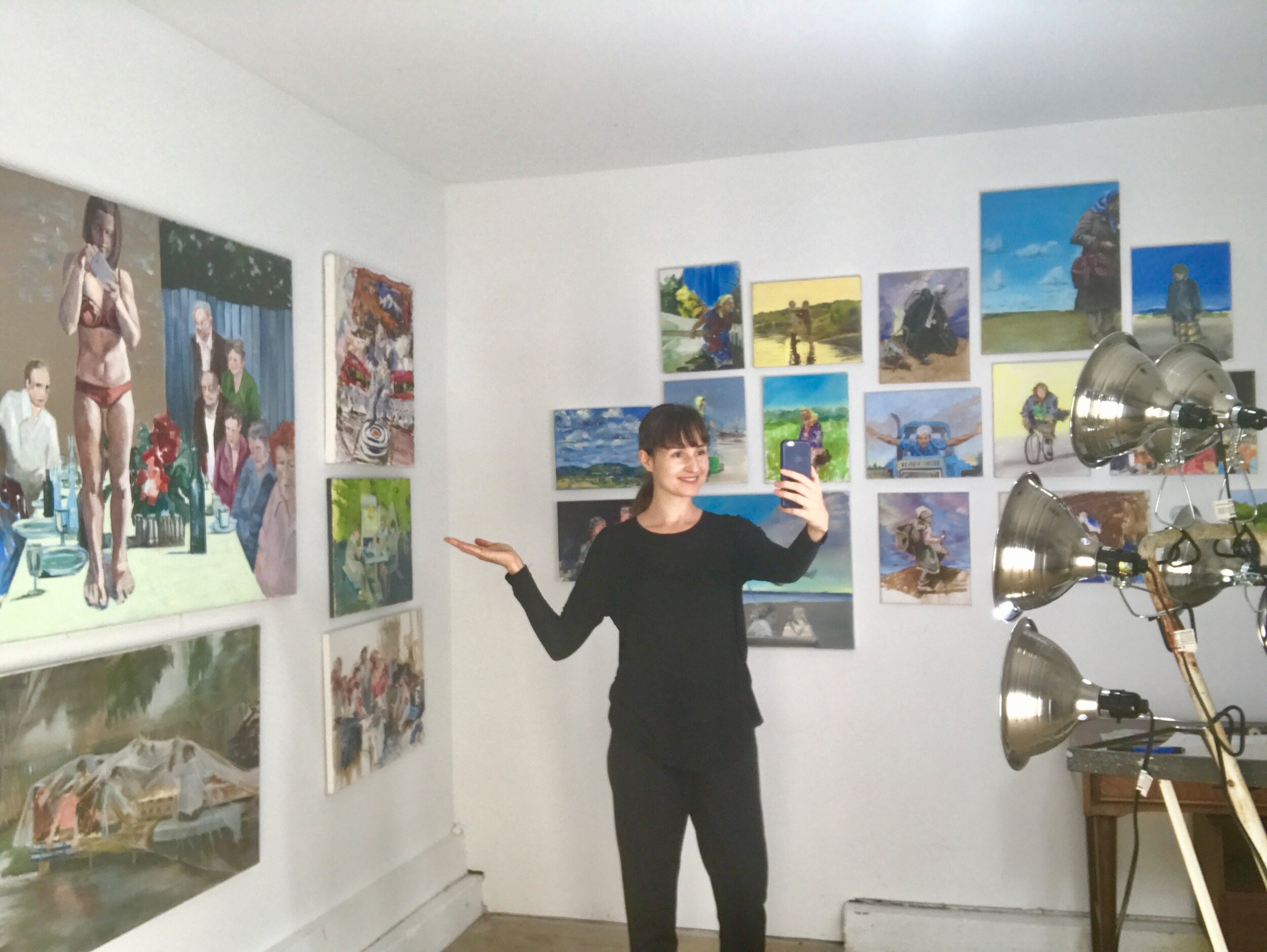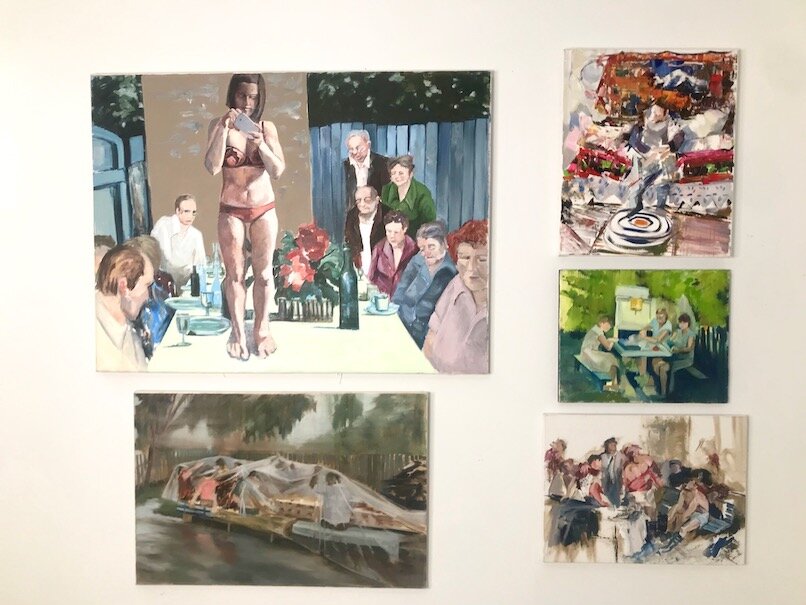by Tyler Brumfield
The Kathrin Cawein Gallery of Art is proud to present LARGER THAN ME, and exhibit by Tatyana Ostapenko from Feb. 7 to March 4. Ostapenko is a contemporary painter and a muralist whose art practice is deeply influenced by her experience as an immigrant, as well as by her formative years in the economically and socially unstable environment of post-Soviet Ukraine.
Opening Reception:
There will be a virtual artist talk on 3:30 p.m. Wednesday, Feb. 9, accessible via Zoom: https://pacificu.zoom.us/j/99550768151
The exhibit is held at the Cawein Gallery in Scott Hall on the Forest Grove Campus. The reception is also In-person attendees must follow campus COVID-19 protocols.
Artist's Statement:
Tatyana Ostapenko makes contemporary history paintings that record the daily lives of people who don’t usually make it into official historical records. She memorializes the middle children of progress and history, her fellow former Soviet citizens as painting subjects. Old women in flowered kerchiefs, leggy damsels desperate for glamour, indomitable middle-aged women dragging heavy bags to the bus stop march across her expressive magical realist canvases.
A distinguishing feature of her artwork is the juxtaposition of realistic rendering and bold abstract paint application. Having started her artistic journey as a street photographer, Ostapenko uses photographic references and digital collage to generate ideas and compositions. She employs a combination of web sourced amateur photographs, her friends’ family archives, and pictures she has taken during her travels in post-soviet Ukraine. Her painting process is intuitive and open-ended, and while she uses photo collage as a starting point, the finished paintings largely deviate from the source material. Her painting practice is a process of exploration of both materials and subject matter, and her loose and violent mark-making allows for unexpected discovery at the end of each brushstroke.
The resulting paintings are an inaccurate record of the everyday history of a distinct flavor with a particular voice that is not often heard either in the West, nor in its homeland. Using specific, yet transformed images of her native country, Ostapenko explores the universal themes of human experience: resilience, empathy and humor in the face of adversity.
Artist's Biography:
Due to her personal history and the collective histories of the former Soviet Union citizens, Ostapenko always comes back to the themes of trans-generational trauma and the gender inequalities that persist in her country of origin as well as in the U.S. She uses images from her native Ukraine to speak about universal human experiences with emphasis on empathy and resilience in the face of adversity.
Her paintings have been exhibited in regional, national and international museums, galleries and art fairs. She has received professional development grants from the Regional Arts and Culture Council and the Oregon Arts Commission. Her artworks have been purchased by public, corporate and private collections, including the city of Seattle and Stumptown Coffee HQ.
Ostapenko was born in the Soviet Union and raised in Ukraine. She lives in Portland, and holds a BFA in Studio Practice from Portland State University.
Exhibition Info:
LARGER THAN ME will run from Monday, Feb. 7 until Friday, March 4. The Cawein Gallery of Art is open Monday through Friday, from 10 a.m. to 5 p.m., and follows the Pacific University academic calendar regarding holidays and closures. In-person attendees must follow campus COVID-19 protocols.
The exhibition is also available to viewed by appointment. To make an appointment, please send an email to brum1878@pacificu.edu.
